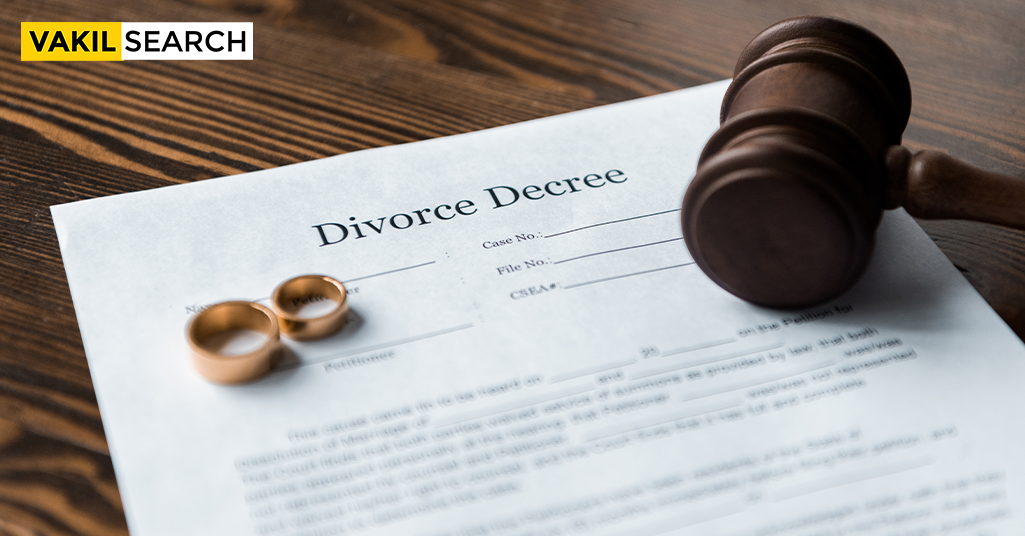It is referred to as Mutual Consent Divorce or Mutual Divorce when both husband and wife mutually agree they are unable to live together anymore and that the best solution is to divorce. The couple submits a Mutual Divorce Case petition jointly to the honourable court, without asserting any allegations against one another.
Introduction
Divorce by Mutual Consent is one of the easiest and smoothest ways to get a divorce in India. Unlike in the West, divorce is still frowned upon in India. However, such attitudes are slowly changing due to social reforms, and women and men no longer have to stay chained to unhappy marriages. Since India has a lot of people from different religions, customs, and cultures living together, divorce laws are also segregated. Here’s a look at the Indian laws for a mutual divorce case as of 2017.
What is Mutual Consent Divorce?
Mutual consent divorce is a method through which the marital status of a married couple is terminated. It’s considered one of the simplest ways to obtain a divorce, compared to other methods such as divorce by desertion, cruelty, or adultery. This form of divorce, commonly referred to as an uncontested divorce, is outlined in Sections 13B(1) and 13B(2) of the Hindu Marriage Act 1955. It involves two petitions, known as the first motion and the second motion, which are filed six months apart.
Indian Laws for Mutual Divorce Case
For mutual consent divorce, Section 13B of the Hindu Marriage Act, 1955, serves as the main guideline for the law. However, as per this law, to file for mutual divorce, the husband and wife must have lived separately for at least one year. Also, the most important requirement is that both spouses must give consent for divorce freely and without any undue pressure or influence.
Essential Requirements for Mutual Divorce Case as per Section 13B
- A joint divorce petition should be filed by both spouses at the District family court
- The provisions under this law apply to all marriages solemnised in India
- The spouses should have lived separately for at least one year. However, here living independently means that the husband and wife have not lived as a married couple. This essentially means that they have not upheld their conjugal rights
- The couple must make the Court see that they cannot live together anymore and that reconciliation has failed
- The petition can be withdrawn at any time if one of the spouses no longer consents
- If the Second Motion is not filed within 18 months, the petition will be cancelled.
Major Indian Cases for Mutual Divorce Case in 2017
- The Suman vs. Surendra Kumar case showed the importance of the interregnum period. The Rajasthan High Court stated that such a period helped ensure that the couple was not rushing into a decision
- In the case of Sureshta Devi v. Om Prakash, the Supreme Court stated that the term living separately means that the couple is not living as man and wife. The term does not have to do with any geographical rules and is not concerned with their places of living
- Spouses cannot resile from the consent given, as a breach of the undertaking accepted by the Court, as shown by Shikha Bhatia vs. Gaurav Bhatia and Avneesh Sood vs. Tithi Sood. The Delhi High Court ruled in Rajiv Chhikara vs. Sandhya Mathu that resiling may amount to mental cruelty when it puts one spouse under tremendous psychological pressure
- The Supreme Court opined in the Smt. Marriage petitions can be withdrawn before the divorce decree is passed, as in Sureshta Devi vs. Om Prakash. However, Mumbai, Delhi, and Madhya Pradesh High Courts have stated that withdrawal can only be done during the first petition. According to the High Courts of Kerala, Punjab, and Haryana, either spouse must withdraw consent. A legal withdrawal must be made during the interregnum period to allow reconciliation
- The Delhi High Court has opined that couples who have filed a petition under Section 13B(1) or 13B(2) need not appear before the said Court for obtaining a divorce if they wish to withdraw their appeal. The distinguishing feature of Section 13B is that it gives the couples a right to unilaterally withdraw their consent
- In the case of Smruti Pahariya vs. Sanjay Pahariya, the Supreme Court stated that the absence of a spouse does not mark their consent. Before passing the divorce decree, the Court must make sure that both parties involved give their free consent for the divorce
- The Hirabai Bharucha vs. Pirojshah Bharucha case witnessed the High Court state that the Court must make every effort to the marriage
- The Division Bench of the Kerala High Court remarked that since the law allowed couples to withdraw their consent, the Court does not have to probe into the reason for their withdrawal
- In the case of Mr. Prakash Kalandari vs. Mrs. Jahnavi Kalandari, the Bombay High Court rules that the Court must ensure that consent given by the parties continues until the decree for divorce grants
- The Division Bench of the Gujarat High Court remarked that marriage is an institution that should sustain and that courts must try to make amends between the couple in all ways possible
- Furthermore, in a recent landmark judgement, the Supreme Court stated that the 6-month cooling-off period may wave if the Court deems it pointless. The Amardeep Singh v. Harveen Kaur case witnessed the Supreme Court state that the cooling-off period as per Section 13B(2), is not mandatory. The decision regarding the same is left to the discretion of the Court handling the case.
Procedure to get Mutual Consent Divorce in India
Obtaining a Mutual Consent Divorce involves a legal process where both spouses jointly file a petition before the family court, stating their desire to end the marriage. The couple must live separately for at least one year before filing the petition.
Step 1: Mutual Agreement
Both spouses agree on issues like custody, maintenance, and alimony, with a minimum separation period of one year
Step 2: Discussion and Decision
The couple, with the help of relatives, lawyers, or mediation, discuss and decide on custody, maintenance, and alimony
Step 3: Preparation of Agreement
A detailed mutual consent agreement is drafted, notarised, and signed by both parties
Step 4: Gather Required Documents
Collect necessary documents such as marriage proof, ID cards, recent photographs, and a waiver of the cooling-off period if applicable
Step 5: Court Proceeding
Attend court hearings, answer questions from the judge, verify original documents, and sign statements. Upon conclusion of both motions, the court issues a decree of divorce, officially ending the marriage.
Conclusion
Navigating the intricacies of divorce proceedings in India involves adhering to specific legal procedures dictated by diverse personal laws corresponding to different religions. Whether it be the Hindu Marriage Act, 1955 or the Special Marriage Act, 1954 or other relevant legislations, each case requires meticulous attention to detail to ensure compliance with statutory requirements. Vakilsearch, with its expertise in legal matters, stands ready to assist you in smoothly maneuvering through the process of Mutual Consent Divorce. Our experienced legal professionals can guide you through the necessary steps, help prepare the requisite documentation, and ensure that all legal formalities are met.
Also, Read:
- Name Change After Divorce Checklist
- Applying for Divorce in India
- Procedure for Hindu Marriage Act Divorce
Frequently Asked Questions
What is the new rule of mutual divorce?
In India in 2024, mutual divorce proceedings have been streamlined. When both spouses agree to dissolve their marriage peacefully, they must jointly submit a petition for mutual divorce, expressing their intent to separate. If the court approves, the divorce can be finalised.
Can we get mutual divorce immediately?
It's not possible to do it within six months of marriage, or even within 11 months. In fact, the timing of this divorce isn't determined by the duration of marriage, but rather by the length of separation. There must be a minimum of 12 months of separation before filing for divorce by mutual consent.
How does the Supreme Court's decision to set the alimony threshold at 25% of the former partner's net income affect individuals post-divorce?
The Supreme Court established the alimony threshold at 25% of the former partner's net income. The Court further decided that a former partner should be entitled to 25% of the other party's net income in order for them to lead a respectable life.
Can court reject mutual divorce?
When divorce is based on mutual consent, there's typically a required waiting period. If the petition is submitted before this period ends, the court might dismiss it.
Is 6 months mandatory for mutual divorce?
The Hindu Marriage Act 1955 includes a mandatory waiting period of at least six months from the filing date of the divorce petition. This period allows the parties involved to consider settlement options and potential reconciliation.
How much time does mutual divorce take?
A mutual divorce typically takes anywhere from 6 to 18 months to finalise. However, the timeline can vary depending on the current caseload and the specific court handling your petition.
What is the cost of mutual divorce court?
The cost might vary from case to case. Get on call with our experts today for more information.
Can mutual divorce be done in 3 months?
The duration required to obtain a mutual divorce in India can fluctuate based on the unique factors of the case and the court's timetable. Generally, it may span from six months to two years before the divorce is finalised.
Who pays in mutual divorce?
The couple must determine through their agreement whether one spouse will pay maintenance to the other in the event of a mutual divorce. In such cases, either the husband or the wife may provide alimony to the other, depending on the terms of the agreement.
Can I remarry after mutual divorce?
In contentious or ex-parte divorce cases, individuals must wait 90 days from the finalisation of the divorce before they can remarry. However, in mutual divorce processes, where there's no chance for appeal, there are no such restrictions on remarriage.










